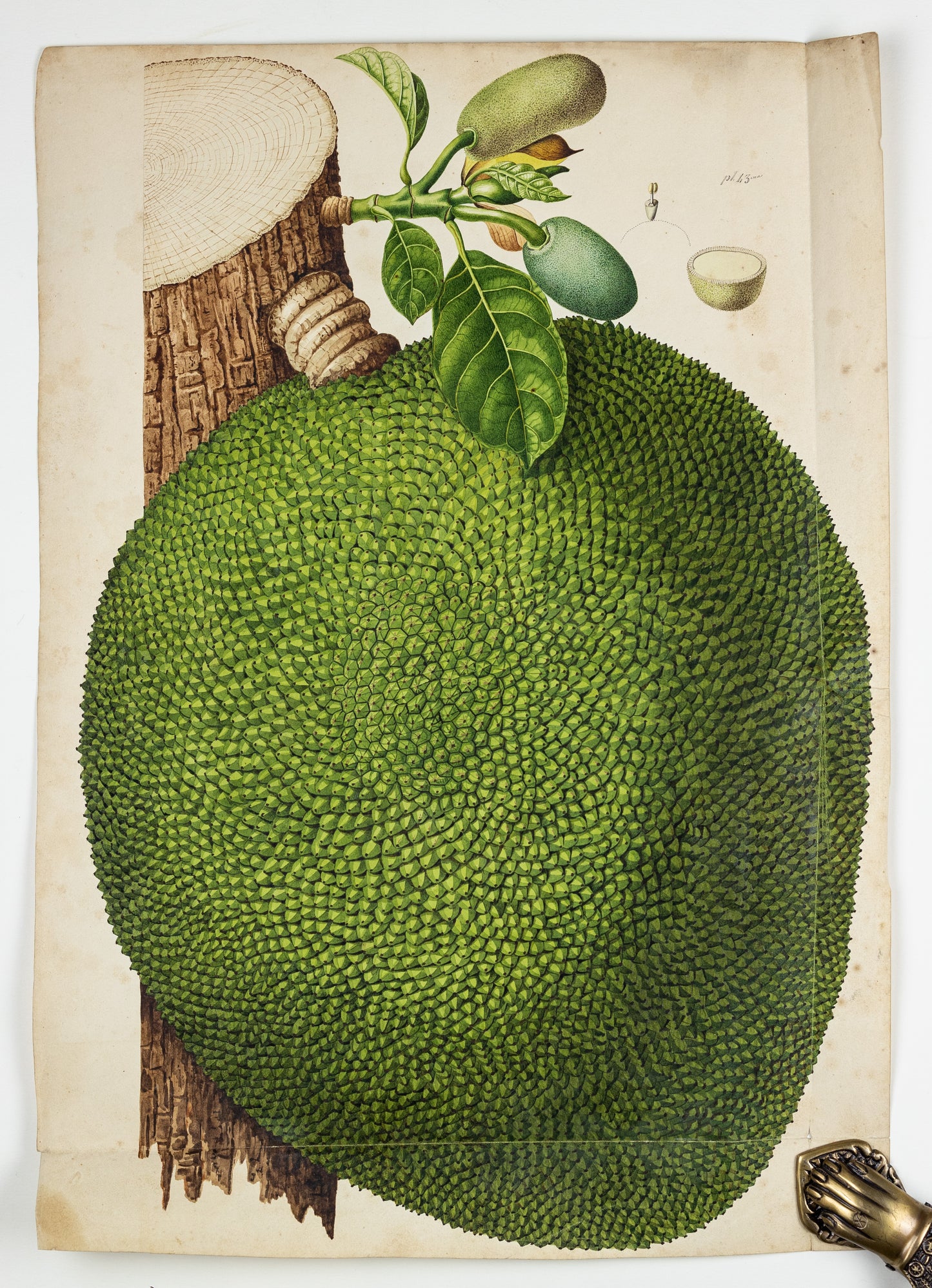from: Poiteau & Turpin Superb Botanical Drawings including varieties from the West Indies
PIERRE-ANTOINE POITEAU (FRENCH, 1766–1854). Jackfruit. 1808–1827.
PIERRE-ANTOINE POITEAU (FRENCH, 1766–1854). Jackfruit. 1808–1827.
Couldn't load pickup availability
PIERRE-ANTOINE POITEAU
(FRENCH, 1766–1854)
“Artocarpus integrifolia, or jaca. Whole-leaved jackfruit or Indian jaca tree”
Preparatory drawing for F.R. Tussac, Flore des Antilles, ou histoire générale botanique, rurale et economique des végétaux indigènes des Antilles.
Paris: chez l’auteur, F. Schoell et Hautel, 1808–1827. Vol. 2, Plate 4.
Watercolor and pencil on paper. Inscribed “Pl 45”
Paper size: 19 7/8 x 14 1/8 in.
Frame size: 28 1/2 x 22 1/2 in.
Tussac describes this plant:
“This fruit is oval in shape, almost heart-shaped, sometimes weighing 80 pounds, but most often, from 50 to 60… This tree was brought from Jamaica to Santo Domingo; it had been introduced into this colony by Lord Rodney in 1782. It comes from the East Indies, like the previous species. The fruit, which was drawn from nature by Mr. Poiteau, a distinguished botanist, comes from a tree that I saw and observed in the garden of the Hopital des Peres, in Cap Francais (Haitian Cape.). Full of zeal and charity, the directors of this establishment had brought together in this garden, not only medicinal plants, for the relief of the poor sick, but also many rare trees, coming from foreign countries; but a hurricane destroyed everything!... In Jamaica we eat the pulp of this fruit, which is yellowish, soft, with a nauseating odor, which nevertheless does not displease everyone because its flavor is so sweet, that it seems to be extremely bland, this is not always to the taste of the Colonists who naturally like acids. This tree therefore deserves to be propagated, both in terms of economic utility, and in terms of the pleasure it can provide through its thick foliage, which the sun’s rays cannot penetrate. This tree multiplies very easily by its seeds, and grows quickly, but it is good to know that these seeds retain their germinative capacity for a short time, and that they must be sown during the fifteen days of their extraction. If we want to ship them far away, we must put them in a small box, in sand or slightly damp earth; a precaution that must be taken for the greater part of the tree seeds of the Torrid Zone, because nature, which does nothing useless, did not need to give seeds which rise when falling from the tree which produced them, the ability to keep for six months or more, as do those which, ripening in autumn in temperate zones, can only germinate in the following spring.”

Appeared in F.R. Tussac, Flore des Antilles, ou histoire générale botanique, rurale et economique des végétaux indigènes des Antilles.
Paris: chez l’auteur, F. Schoell et Hautel, 1808–1827. Vol. 2, Plate 4.


